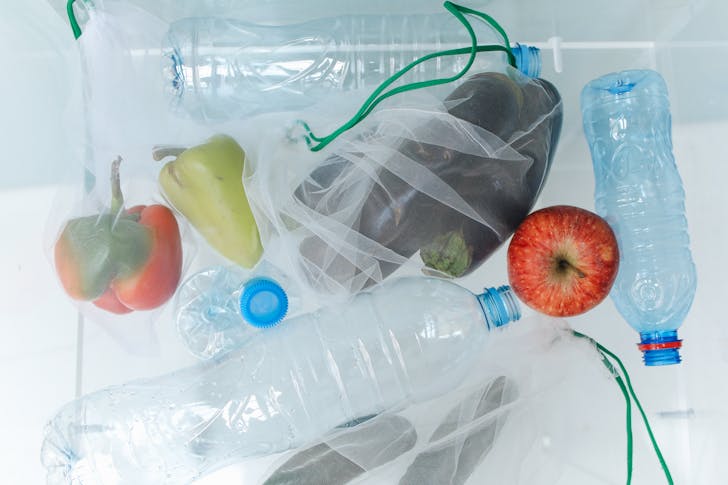
How Hazardous Food Packaging Chemicals Can Be Found in Humans

A startling new study has revealed that food packaging chemicals, found in materials like plastic wraps and containers, are present in the human body. This discovery, published in the Journal of Exposure Science & Environmental Epidemiology, raises serious concerns about the health implications of these chemicals. The study, led by Muncke and her team at the Food Packaging Forum Foundation, identified over 3,600 chemicals from food packaging in human samples, including blood, urine, and breast milk.
Out of these, around 80 are known to have hazardous properties, posing significant risks to human health.
What Are Food Packaging Chemicals?
Food packaging chemicals refer to substances used in the production of containers, wrappers, and other packaging materials that come into direct contact with food. These chemicals help preserve the food, enhance the durability of packaging, and prevent contamination.
However, many of these chemicals can leach into the food itself, especially under certain conditions like heat or prolonged storage.

Polina / Pexels / The research suggests that plastic wraps used on vegetables such as cucumbers can contain phthalates. A group of chemicals known to interfere with human hormones.
These compounds can migrate from the packaging to the food, and once consumed, they enter the bloodstream. The study highlights that heat and time are two major factors that accelerate the release of these harmful chemicals into food.
The Research Finds Over 3,600 Chemicals
One of the most shocking aspects of the research is the sheer number of food packaging chemicals found in human bodies. Over 3,600 chemicals have been detected, a number far higher than previously anticipated. Muncke and her colleagues synthesized data from multiple studies, showing that these chemicals have permeated our everyday lives in ways that extend far beyond food.
However, what is particularly concerning is that of these thousands of chemicals, about 80 are classified as having “hazard properties of high concern.” This means they can cause serious health issues, including hormone disruption, cancer, and developmental disorders.
Some of these hazardous chemicals are not just used in food packaging. But they are also found in clothing, personal care products, and household furniture. This overlap means that exposure is constant, not limited to what we eat.
How Food Packaging Chemicals Enter Our Bodies?
Food packaging chemicals can enter the body through ingestion, inhalation, or even skin contact. When food is stored in plastic containers or wrapped in certain materials, especially when heated, chemicals can seep into the food. This is why you might notice a stubborn reddish stain in a plastic container after storing tomato sauce. This residue is a visible sign of a chemical reaction between the food and the plastic.

Dennis / Unsplash / The research points out that while the body can start clearing some of these chemicals within days, others accumulate over time. This can contribute to a slow buildup of toxins.
Long-term exposure to these chemicals, even in small amounts, can lead to chronic conditions such as obesity, diabetes, and heart disease. The slow and consistent accumulation of these harmful chemicals means the risks are often underestimated, making it a silent but serious public health issue.
How Does It Impact on Human Health?
One of the key concerns raised by the study is how food packaging chemicals impact long-term health. While the short-term effects of exposure to low levels of these chemicals might not be immediately noticeable, the long-term consequences can be severe. Many of these chemicals, such as phthalates and bisphenol A (BPA), have been linked to hormone disruption. In turn, this can lead to reproductive issues, developmental problems in children, and an increased risk of cancers.
Moreover, the research suggests that exposure to these chemicals might also play a role in the rise of chronic diseases. Obesity, diabetes, and heart disease are often associated with lifestyle factors like diet and exercise. But this study indicates that food packaging chemicals might also contribute to these conditions. These findings underscore the importance of re-evaluating the materials used in food packaging to protect public health.
More inFood Adventures
-
`
How to Start a Landscaping Business – 10 Simple Steps
Starting a landscaping business is a fantastic way to combine your love for the outdoors with a profitable venture. You get...
May 22, 2024 -
`
The Ultimate Morning Routine Checklist for Peak Productivity
Imagine waking up feeling energized, focused, and ready to tackle anything your day throws your way. That’s the power of a...
May 16, 2024 -
`
The Pros and Cons of Living in a Cape House
Cape Cod houses have graced the American landscape for centuries, their enduring popularity a testament to their timeless design and practicality....
May 9, 2024 -
`
Squid Ink Pasta with Shrimp and Scallops – A Gourmet Seafood Delight
There’s something undeniably captivating about the contrast of deep black squid ink pasta against the vibrant hues of fresh seafood. This...
April 30, 2024 -
`
What is Provisional Credit and How Does It Benefit Merchants?
In today’s fast-paced financial landscape, chargebacks have become a common occurrence for businesses. Among the tools available to merchants is provisional...
April 23, 2024 -
`
Life is Poetry – Find Beauty & Meaning in Every Moment
Have you ever paused to consider your life as a form of artistic expression? Every breath you take, every choice you...
April 16, 2024 -
`
10 Mega-Mansions That Redefine Luxury Living
Forget modesty – opulence is the name of the game for the elite. While high-end properties are rare, a recent surge...
April 9, 2024 -
`
Popeyes Chicken Recipe – Crispy, Flavorful Fried Chicken at Home!
Craving that iconic Popeyes® fried chicken? The shatteringly crisp crust, the juicy, flavorful chicken beneath – it’s a taste bud tantalizer....
April 1, 2024 -
`
Is Costco Car Insurance a Good Option? Here’s What You Should Know
Navigating the world of car insurance can feel overwhelming. Between endless quotes, policy jargon, and deciphering coverage options, it’s easy to...
March 26, 2024















You must be logged in to post a comment Login